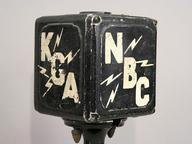Quiz Answer Key and Fun Facts
1. Initially broadcast on BBC2 between 1988 to 1999, which TV channel brought back the TV comedy series "Red Dwarf" back to TV with a new series in 2009?
2. There are a number of documentary channels that are shown on TV via satellite and cable TV in the UK. Which of the following TV channels is not part of the Discovery Channel group?
3. Soap operas have been a long-standing part of British TV, but which of the following British soap operas was the first - from the answers given - to be shown first on TV?
4. Science Fiction programmes have gained a cult following over the years with conventions dedicated to these very programmes. Which BBC sci-fi programme celebrated its fiftieth anniversary in 2013?
5. Saturday morning TV was once dominated by children's TV programmes made by the BBC and ITV. Which of the following programmes was made by the BBC?
6. When ITV was created, it was split up into a number or regions, each with its own broadcaster dedicated either to make regional programmes - including news and weather broadcasts - as well as making programmes to other regions within the ITV network. Which of the following broadcasters has NOT had a license to broadcast TV programmes in the South / South East of England?
7. When Channel 4 was launched in 1982, what was the first programme to be shown on that channel?
8. The BBC first began broadcasting radio programmes in 1922, but when did the BBC first begin to broadcast television programmes?
9. Although TV comedy programmes have been imported from America and adapted for British TV, Britain has also exported TV programmes, adapted for the American audience, often with different titles. Which of the following British TV comedy programmes when remade in the USA is the odd one out?
10. Growing up in the 1960s, much of my childhood TV was dominated by watching programmes made by the late Gerry Anderson, famed for his Supermarionation filming technique of using marionettes rather than actors. Which of the following TV programmes made by Anderson for ITV was the first to use actors, coupled with special effects?
Source: Author
mcsurfie
This quiz was reviewed by FunTrivia editor
ladymacb29 before going online.
Any errors found in FunTrivia content are routinely corrected through our feedback system.

